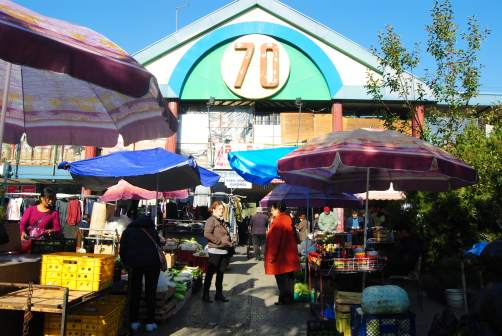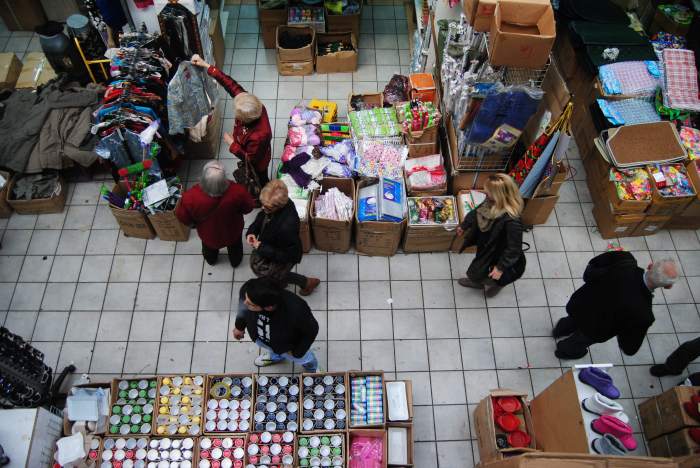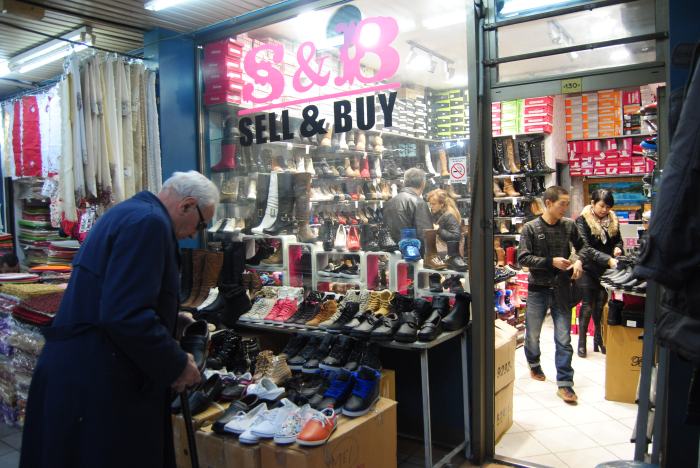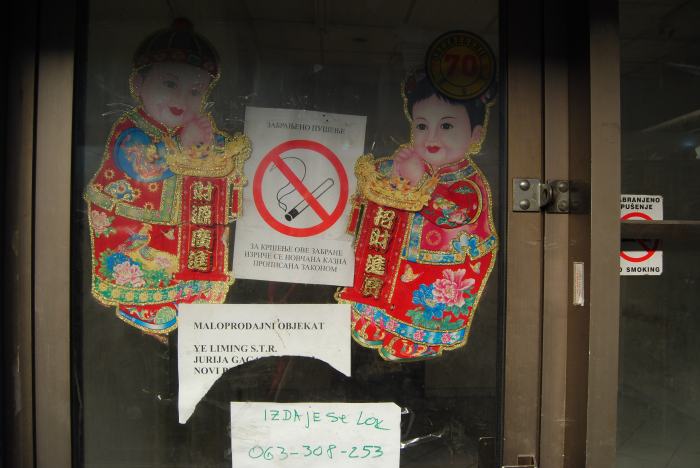
In the last twenty years, more than 500 Chinese shops were opened in Belgrade’s Blok70, which has become a microcosm of Chinese migrant culture. In order to make this odd social phenomenon more understandable, Kosovo 2.0 walks you through a short history of Belgrade’s Chinatown, which starts in the mid to late 1990s, during the regime of former Serbian President, Slobodan Milosevic.
In Serbia, it is commonly believed that the Chinese started coming to Belgrade in the second half of the 1990s. After visiting China in 1997, Milosevic decided to liberalize visa regulations, giving Chinese immigrants an opportunity to start small businesses. At the time, many people argued that Milosevic did this in order to secure himself the votes to remain in power. Other theories claim that Milosevic’s government was “the last bastion of communism in Europe” and that the Chinese wanted to support it.
The Chinese came to this ‘undesirable migrant country’ at the time when a ‘post-war’ atmosphere hung in the air and the conflict in Kosovo was about to escalate. During the NATO intervention in 1999, the Chinese embassy in Belgrade — “a wrongly selected target” — was bombed and Chinese immigrants who stayed in Serbia witnessed all the failures and decline of the Serbian state.
According to the research of Dr Maja Korac, a sociologist who specializes in refugee studies, migration and integration, the Chinese immigrants who arrived in the ’90s were not planning to stay for good. The majority of them wanted to use Serbia as a “soft spot” from which to enter countries in the European Union.

Almost two decades later, Serbia is still considered an undesirable migrant destination. Most migration occurs in the opposite direction, with more than 12,000 citizens of Serbia leaving the country annually. The large Chinese migration into Serbia occurred when China was experiencing its own period of mass emigration as many skilled professionals left their ‘land of broken hopes.’ Liberalization of the visa regime was a tailwind for many Chinese to take this journey. In the second half of the 1990s, many Chinese rented small shops in a renovated socialist building in part of the city known as New Belgrade. This building is Blok70, the largest Chinatown in the Balkans.
In 2011 I visited Blok70 with two other colleagues planning to make a short movie about Belgrade’s ‘exotic’ shopping mall. Numerous questions were drifting through our minds: Why is it that we never see Chinese people walking on the streets outside of Blok 70? Does Serbian culture influence their lifestyle, religious beliefs, and ways of having fun? Are they happy?
After a month of hanging around we made a short student movie called “Long Journey Ahead.” During the process of making the film, we found that the majority wanted their children to be educated in China. They believed it best for their children to spend their formative years surrounded by the Chinese cultural environment.
Those who stay in Serbia either go to the International schools and learn English or stay and work in the family business. During our stay in Blok70 we met a Chinese woman who introduced herself by a Serbian name, Sara. She had a small studio where she was selling her paintings and wooden frames. She was fluent in English, well-educated and had worked in many different places all around the world.
“If the money is good, I can bear to be separated from my child in China,” Sara told us. “If the money is not good, I will move for a better opportunity. It doesn’t matter where I go, I just want my child to have a good education and enough money to start a business. We miss each other, but we constantly communicate and share our daily experiences.”
Even during the busiest days in Blok70, it is possible to see and hear Skype conversations, laughter, camera-phone recordings, and people taking pictures. Many of the Chinese tend to use the latest technology to keep in touch with their relatives.

Four years later, in November 2015, I decided to visit Blok70 again and try to find some of the people I talked to back in 2011. Entering the main square, I immediately recognized a smiling face of an older lady who was selling vegetables. Curious customers were asking her how to cook Bok Choy and they were all laughing together.
It didn’t take me very long to notice that it was less crowded than before. I struck up a conversation with a Serbian woman who has been working in Blok70 for fifteen years. During this period, she has had more than five Chinese employers. She told me that none of them stayed for more than ten years in Belgrade. Her previous boss moved to Colombia two years ago.
“Colombia is the new ‘promised land’ for Chinese immigrants,” she told me. “The Chinese made a lot of money during the 1990s when they didn’t have to pay any taxes. Now, most of them are poor.”
Serbia is no longer the most desirable destination for Chinese to make massive “trade migrations.” A significant number have already left the country, most of them reportedly departed for Portugal and Colombia, which offers a satisfying quality of life and a low cost of living, although it is hard to find official data on exactly how many Chinese have left Serbia over the past four years.

According to the official statistics issued by the Ministry of Internal Affairs in 2009, there were 4,947 Chinese in Serbia: Three of them had a permanent residence permit, and only one had Serbian citizenship. Unofficial data announced by the Statistical Office of the Republic of Serbia in 2011 showed that there were 1,373 Chinese in the country. It is hard to view these figures as reliable though, due to the fact that many immigrants don’t want to be registered.
The future of Belgrade’s Chinatown is uncertain, largely due to the fact that the Serbian economy is not currently improving. One of the employees in Blok70 said: “Even the Serbs are not here to stay for good, why would the Chinese be?”
For those who want to believe that Chinese immigrants are mysterious merchants who came to take “our” jobs, there will always be true and untrue stories that will keep Blok70 “exotic.” If you ask me, the Chinese immigrants are no different from any other Serbian citizen trying to survive the never ending transitory period.
The current migrant crisis has taught us that there are no differences in basic human needs. We all want a ‘normal life.’ Various unwanted circumstances often dictate where we try to make one. Sometimes, two years unexpectedly turn into two decades, and a base might still not be built.
http://www.kosovotwopointzero.com/en/article/1976/dy-dekada-te-lagjes-se-kinezeve-ne-beograd